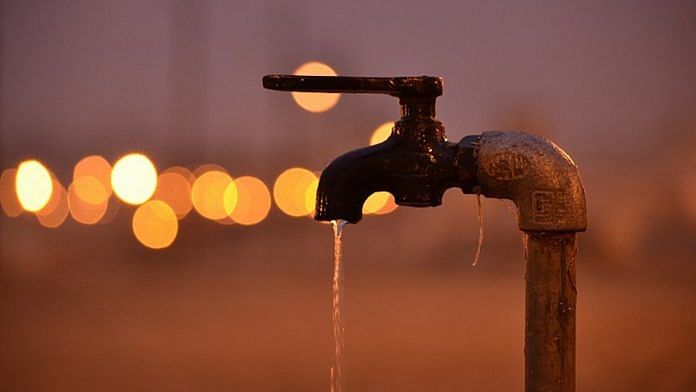
Thank you dear subscribers, we are overwhelmed with your response.
Your Turn is a unique section from ThePrint featuring points of view from its subscribers. If you are a subscriber, have a point of view, please send it to us. If not, do subscribe here: https://theprint.in/
The Alma-Ata Declaration that emerged as a key milestone in erstwhile USSR in 1978 was responsible for giving the world some of the important definitions surrounding public health. It identified primary health care as a key to the attainment of the goal of ‘health for all’. In fact, the first point of the declaration coincides with the definition of health as per WHO-‘Health is a state of complete physical, mental and social well-being and not merely the absence of disease or infirmity’.
The declaration further puts forward that it is a fundamental human right and that the attainment of the highest possible level of health is the most important world-wide social goal whose realization requires the action of many other social and economic sectors in addition to the health sector.
The main intention was to highlight the gross inequality that existed between the developed and developing countries when it comes to the overall health status of people and access to health resources. While there have been clear attempts to hide the unclean management of health resources in the midst of a raging pandemic, an effort to revisit the Alma-Ata Declaration word by word might leave the readers gasping for breath. In the sense that agreements that look very basic and is over 40 years old, our’s as a great nation that is 75 years young is still reeling with huge public health crises. There is underfunding and low infrastructure development and we are still many years behind. Somehow, the marginalised are always left behind.
John Hopkins University’s ‘Planetary Health Program’ takes cue from the Alma-Ata Declaration and goes a step further by focussing on reducing over-nutrition with a major focus on maintaining ecosystems and biodiversity. The programme is led by the Lancet and the Rockefeller Foundation. It aims to decentralise health systems by empowering the local stakeholders and giving them the onus to decide and manage things, thereby localizing health systems. Although, decentralised health system exists in our country, the focus should equally go on to managing the ecosystems for better results. To manage the surroundings, we have to manage our water systems!
Water: Key to managing health
In almost every environment-related ‘day’, be it Earth Day, world environment day, World Water day, etc., water as a resource is involved. It’s a fundamental resource that’s also recognised as human right. The recently concluded ‘World hand hygiene Day 2021’ was observed on 5 May amidst the Covid-19 pandemic. WHO described to have a ‘multi-modal improvement strategy (MMIS)’ which is at the core of its implementation models for hand hygiene and infection prevention and control (IPC) programmes. The said approach is grounded in behavioral science and has proved to be highly effective, leading to significant improvement in hand hygiene compliance. It is grounded on just five words, namely, build, teach, check, sell and live. Hand washing which is an important component of WASH (Water, Sanitation and Hygiene) has proved to be effective in stopping various disease outbreaks. This is extremely important as developing and least developed countries (LDCs) have a poor track record of people dying due to Diarrhoea.
SDGs and valuing water
This year’s World Water Day was themed around ‘valuing water’. A highly significant topic, valuing water has different meanings for different groups and stakeholders. The double whammy of climate change and Covid-19 has provided an impetus when it comes to valuing water. And for WASH practices to sustain in order to ward off of potential public health crises, availability of water at all times must be a priority. Hence, commodification of a quasi-public good like that of water can always bring in conflicting situations, thereby threatening water security.
SDG 6 (clean water and sanitation) and SDG14 (life below water) are explicitly water specific goals and they go a long way when it comes to valuing, governing and managing water. There are 8 targets and 11 indicators under SDG 6. The focus has been largely on developing countries and decentralizing the water systems to have last mile connectivity and reaching out to the marginalised population as much as possible.
28 May is celebrated as menstrual hygiene day every year. Interestingly, there is no specific goal or indicator on Menstrual Hygiene Management (MHM). Yet, MHM is central to achieving SDG 3, SDG 4, SDG 5,SDG 6,SDG 8 and SDG 12.It is also about breaking taboos, changing narratives around menstruation so that women and girls can bleed without embarrassment and making education and work environments more inclusive. As per principle no 3 of Dublin Principles, women play a central part in the provision, management and safeguarding of water, yet we are to see women leading institutional changes although a few of them have been visible. Gender mainstreaming in understanding water policy and issues is the need of the hour.
Also read: SubscriberWrites: India’s ‘system’ has failed but illusion of leadership lingers
These pieces are being published as they have been received – they have not been edited/fact-checked by ThePrint.


COMMENTS